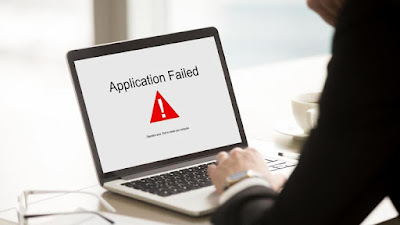EXCHANGE RECOVERY USEFULNESS


Read why, after data recovery, some files won't open or open with error. How to repair damaged files or return data from them. Any information stored by the user is of great importance to him, regardless of the area of his application. When it is deleted, the user can restore it and return all the data. However, a situation often arises where the recovered files do not open. Next, we will describe the possible causes that do not allow the files to be opened after their recovery, and we will offer ways to renew access to those files.

Each computing device is designed for the use of various
data storage devices: hard drives, external drives, USB flash drives, memory
cards of various formats, etc. All of them allow to store, process and exchange
the data desired by the user.
However, important user data can be lost due to various
causes, starting with the usual accidental deletion of data and ending with
file system corruption. Regardless of the causes that led to data loss, users
can restore their files and retrieve the lost information for later use.
Users may face a situation when after file recovery its
internal contents become inaccessible and it is not possible to open it. Such a
result can lead to unwanted consequences, when the user may decide that the
important data has been lost forever. However, it is too early to make the
final conclusion about permanent data loss. There are several ways to
eventually recover the data in one way or another. In this article we are going
to consider the possible causes why, after restoring the files, the user cannot
open them, and we are going to show ways to solve this problem.
General causes, why the file cannot be opened after
recovery.
Causes involving the inability to open files after recovery
may be different. In most cases, each cause is individual and depends on a
number of factors. However, there is a general list, which presents the reasons
that occur most frequently:
Physical
damage to the storage device: Any mechanical damage to the
data storage memory device may cause damage to the information stored on it.
And as a result, the user cannot open the file after recovery, due to lack of
direct physical access to the individual data during the file recovery process.
Bad
sectors in the storage memory device: One of the possible causes of
inability to access the content of the recovered file is the presence of
so-called Bad blocks (inaccessible areas of the storage device), which contain
the file information, but the system cannot access them. If a bad sector
contains the information about the structure of the file, then the
corresponding level of logical connection disappears, leading to the inability
to open the file after recovery - the file cannot be read.
Deformation
or erasure of the contents of the sector as a result of a malicious virus
attack: The developers of malware (viruses) use different
algorithms to destroy or damage the internal contents of the file and the range
of malware is unusually wide. Viruses can distort the information in the file
to rule out the possibility of its later correction, even after the application
of professional data recovery software (for example, they fill the contents of
the file with zeros or ones, delete records from the logical structure file,
etc.). As a result, the user will no longer be able to open such files.
Total
or partial rewriting of the content of the file with other data: In
the process of deleting the file, only the file label is deleted, which
contains all the information about it, its size, location, format, etc. and, in
addition, the system marks the disk space occupied by the specific file, as not
occupied and available for the recording of the new data. By executing the
command aimed at saving the new file, the system checks the unit for the
presence of an empty space, according to its labels, and saves the new data.
Following its own logic, the system can select all or some sectors and write
the new information to them, thus destroying the previous recording. With more
such sectors rewritten, the greater the probability that after the restoration
of the deleted file its contents will not be reflected.
Strong
memory device fragmentation: The device for data storage
records any information to the sectors (clusters), free and available for
recording at any given time. If the sectors are side by side on the disk and
the recorded file is integral, then it is much easier for the recovery program
to perform signature analysis of the contents of the file and restore it
without damage to its entire volume. But in the case, when the content of the
file is divided into multiple fragments, spread out chaotically across the body
of the drive, such position can lead to the loss of the separate sectors that
can contain the important information that influences the recovery of the file.
The absence of the title data of the file or individual sectors, with a high
probability, may not allow to open the file,
Main
load table (MBR) corruption: Load write corruption can
lead to result when the operating system will not be able to detect the partitions
or correctly determine their parameters. This may cause damage to the logical
structure of the partition, destruction of the internal contents of the table,
or the recording of partitions on one of the links in the Extended Partition
chain. Partial or total damage may result in the absence of the content in the
restored file and, consequently, the inability to open it.
File
system corruption: External signs are quite similar to the issues
in the previous section, with the only difference that the partition is
available for use, but is not determined by the operating system. In the
process of restoring the file system, error correction is performed, but quite
often, such an action is not enough, and the system may see a part of files as
lost strings, which even after recovery may have problems with the opening.
Ways
to Fix Data Recovery
There is a way to every problem, so to fix your problems
after data recovery, we should use another best data recovery tool that will
solve your problem of data loss and file corruption. One such best data
recovery tool is Unistal Quick
Data Recovery tool that recovery all your lost data and fixes your
corrupted file without any damage and gives you 100% and quick result.
Conclusion
Digital information is of utmost importance to users and
special attention is paid to secure storage methods. However, for a number of
different causes, information can be lost. Not all recovery tools are able to
return user files in full correct and functional condition.
But knowing the causes, which can cause a problem in the
opening process of the recovered file, and the possible ways to correct it, the
user can greatly increase his chances of returning the important information
contained in such file, and get rid of the costs.
Comments
Post a Comment